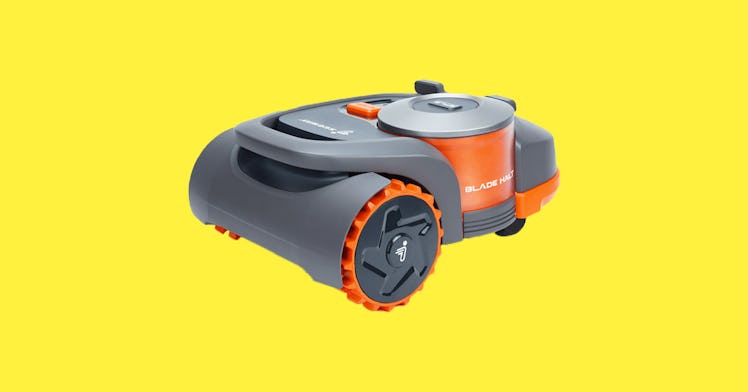Segway’s New Robot Lawnmower Is the Future of Landscaping
Finally, a robot lawnmower that trims turf in orderly rows.

While a robot lawnmower isn’t exactly a new idea—you can buy them from Walmart these days—Segway’s version might be the one America has been waiting for. The Navimow uses GPS to determine exactly where it is on the lawn, then uses that information to mow in tidy rows, mimicking the pattern a human would use. That means fewer instances of missed patches of grass and haphazard mowing lines left behind, plus—for parents—a much easier installation. In short, it mows as you would.
Unlike robot vacuums, nearly every autonomous mower in the US requires a guide wire to sense its way around your lawn. A long spool of low voltage wire is not something seen much in marketing photos and almost never in videos, which might make it seem like these mowers work like a Roomba.
But installing that guide wire around the perimeter of the lawn can take hours depending on the size and complexity of the yard. If your yard changes—say you add a swing set later—you’ll have to redo part of the guide wire. A popular installation method calls for the boundary wire is staking it down to the surface of the lawn, and if you have kids that can be a trip hazard. Once you have that guide wire and docking station installed, the robot mower bounces around randomly within the perimeter, eventually getting to all the grass.
The Navimow setup is faster, easier to tweak, and more accurate. Using the app, you steer the robot lawn mower around the perimeter of the lawn, defining the initial boundary, your different lawns, and any obstacles to avoid, like trees. You can drive it right over a paved walkway to get from one side of the lawn to the other—something that’s difficult to do with a boundary wire. And you can repeat the process at any time should your lawn change and you add a flowerbed or add a patio. Then you stake a tall, black plastic antenna into the ground to help the bot keep communication with satellites above and determine its position on the lawn, down to about an inch. From there, an algorithm determines the best, systematic mowing pattern. The bot goes back and forth mowing crisp rows ending each run with a 180-degree turn in the opposite direction.
Sounds pretty great, right? Yet Segway hasn’t announced plans to release the Navimow in the US. iRobot was set to launch Terra here before the pandemic stymied the release. Like all robot lawn mowers, Navimow is fitted with sensors and safety tech that prevents it from mowing over children, toys, and pets. Other sensors will return the bot back to the dock if it senses rain, though it’s rated to handle getting wet. If you live on a hill, take note of the rubber, not plastic, wheels that give it better traction and the ability to handle slopes up to 45 percent.
Launched with four models, the Navimow ranges from a $3,000 version, to handle lawns up to 32,000 square feet per charge, down to an entry-level, $1,800 option for lawns up to 5,381 square feet. And it’s quiet enough to run at night, making about as much noise as an electric toothbrush.
Every product on Fatherly is independently selected by our editors, writers, and experts. If you click a link on our site and buy something, we may earn an affiliate commission.